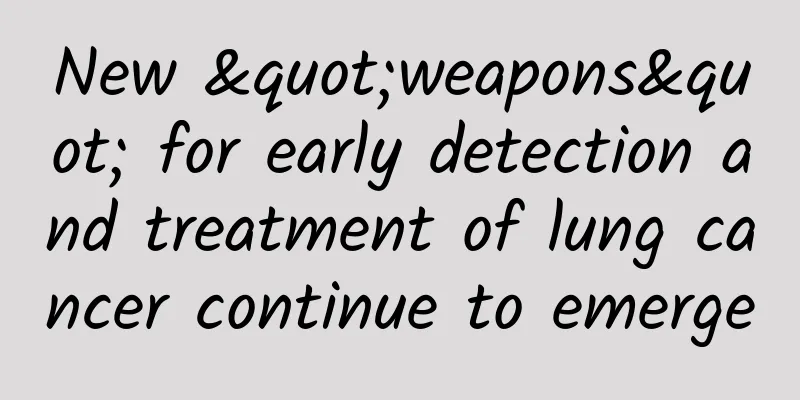Nerve pain in the breast

|
Breast pain (distending pain in breast) can be seen in physiology and pathology. Common physiological breast pains include: swelling and pain during puberty, premenstrual pain, swelling and pain during pregnancy, swelling and pain after childbirth and abortion, but most physiological breast pains are related to psychological anxiety. If breast pain persists and does not subside, and if you find a hard lump with irregular shape, unclear edges, and poor mobility, you should go to the hospital for a physical examination and treatment as soon as possible. Common disease causes Physiological causes include breast hyperplasia, mastitis, and breast cancer; physiological causes include puberty, early menstruation, pregnancy, after childbirth, and after abortion, etc. Breast pain causes and common diseases 1. Physiological (1) Breast hyperplasia: The key cause of the disease is the imbalance of endocrine growth hormone. The response of breast tissue to growth hormone is very sensitive, and breast pain is often the first symptom for patients with breast hyperplasia to seek medical treatment. Fibrocystic breast disease may be accompanied by breast lumps, menstrual disorders (delayed, scanty, light-colored menstruation), nipple discharge, mood changes (worsening temper, irritability, tension and anxiety), etc. Therefore, it is important to distinguish normal breast pain from breast hyperplasia to avoid delaying treatment. (2) Mastitis: Mastitis is divided into lactation mastitis and non-lactation mastitis. Common subacute mastitis often occurs during lactation, especially in the first birth. It is a subacute breast inflammation caused by bacterial infection during lactation, and the part will have typical manifestations of redness, swelling, heat, and pain. Symptoms such as chills, fever, fatigue, and loss of appetite may occur throughout the body. If a breast cyst occurs, color Doppler ultrasound can show the fluid level, and puncture can extract the pus. (3) Breast cancer: Breast cancer mostly occurs in women between the ages of 40 and 60, and the incidence rate is higher in women around menopause. Early-stage breast cancer is often painless, while painful breast cancer usually indicates late stage. Scientific research shows that postmenopausal women who experience breast pain and thickening of the glandular ducts have an increased risk of breast cancer. Of course, when a tumor is inflamed, there may also be swelling or tenderness. If the terminal tumor invades the nerves or the axillary lymph nodes are swollen and compressed or invade the brachial plexus, there will be swelling and pain in the shoulder. Breast cancer is also accompanied by breast lumps, nipple discharge, nipple changes, skin changes, and swollen axillary lymph nodes. 2. Physiological (1) Breast pain during puberty: During puberty, the breasts begin to grow and develop, and the nipples begin to bulge. The breast tissue under the nipples will develop dome-shaped lumps the size of lentils or cowpeas, which are slightly swollen and painful. After the first menstruation, the swelling will disappear on its own as the breasts grow and develop during puberty. (2) Early breast pain: More than half of women experience breast swelling, hardness, and tenderness before their menarche. In severe cases, the breasts may become painful and uncomfortable with just a slight vibration or impact, and the original granular or lump feeling may become more pronounced. This feeling usually subsides after the menarche. (3) Breast pain during pregnancy: Some women experience breast hyperplasia and breast enlargement around 40 days into their pregnancy, which can cause breast pain. In severe cases, the pain may last throughout the entire pregnancy. (4) Postpartum breast pain: Breast distension, lumps, and pain may occur 3 to 7 days after giving birth. (5) Breast tenderness after artificial abortion: After artificial abortion, some women have breast tenderness and can feel a lump in their breasts. (6) Breast pain during sexual intercourse: Breast hematoma and swelling are not easy to dissipate, or do not dissipate completely, causing breast pain. |
<<: How to relieve morning sickness and nausea
>>: Earliest signs of pregnancy
Recommend
How can I exercise to tighten my vagina?
After giving birth, women will experience vaginal...
Will the fetus move when the pregnant woman is asleep?
Fetal movement refers to the movement of the fetu...
How to regulate irregular menstruation
Women may encounter various physiological problem...
How painful is it to break the hymen?
The hymen is broken, also known as the urethral v...
What is vaginal bleeding after menstruation?
Some female friends found that they were still bl...
How much does a prenatal check-up cost?
From the beginning of pregnancy, pregnant women h...
Pharmacist’s Antidote | “Worried” Parents ~ Don’t worry about children being infected with Helicobacter pylori. Understanding these issues will help you become a worry-free parent!
Helicobacter pylori (Hp) is a spiral-shaped bacil...
What is skin hunger?
Leviathan Press: In existing studies, if children...
I have an incompetent cervix. How can I keep my baby?
Author: Zou Liying, Chief Physician, Beijing Obst...
Breast pain and swelling
Mothers often experience breast engorgement and b...
What are the benefits of durian for women?
In fact, durian has many benefits for women. We a...
What causes vulvar malnutrition?
Women's private parts are more sensitive and ...
Why does a woman's left rib hurt?
In many cases, rib pain has become a common disea...
Characteristics of menstrual bleeding during perimenopause
Maybe many young ladies still don’t know what men...
Echo area of 79 after medical abortion
After medical abortion, in addition to timely con...









